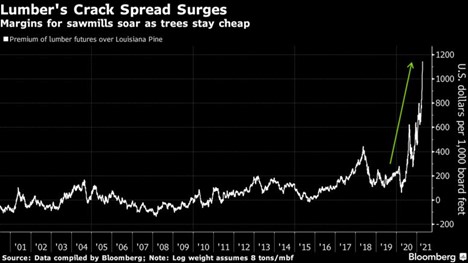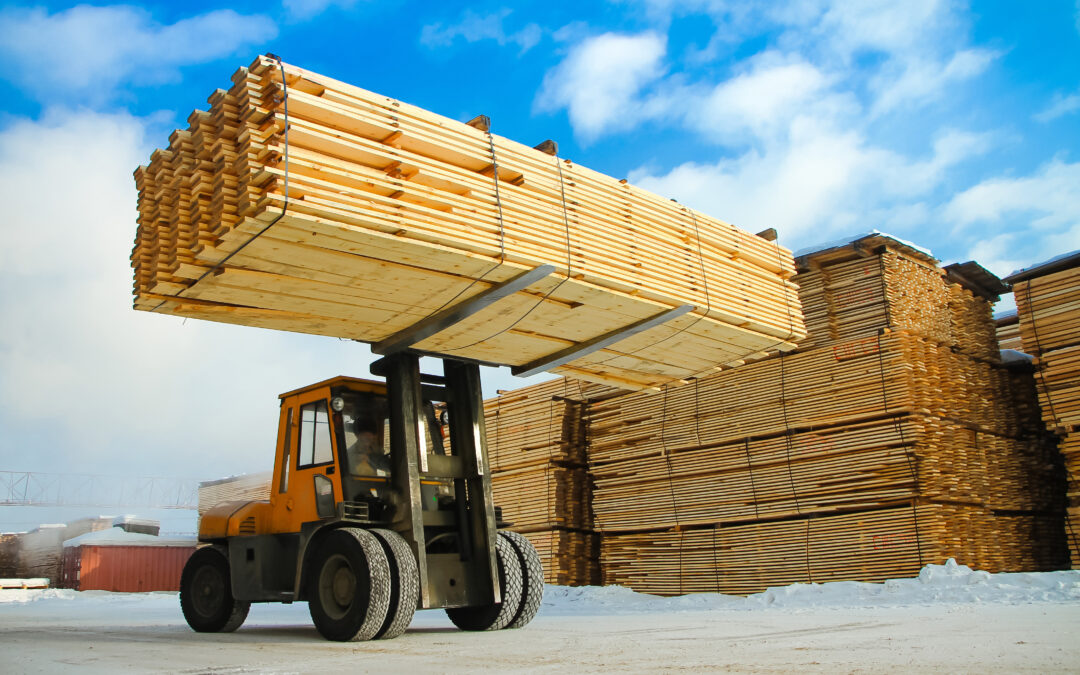Lumber prices are soaring and keep setting new highs. Lumber futures are up more than 200% since the beginning of the year.
This has an inflationary effect on the broader economy. According to Bloomberg: “The lumber rally has lifted the price of an average new single-family home by $35,872 over the past 12 months, according to the National Association of Home Builders.”
Furniture and other wood products are also more expensive. But not all lumber-related products are seeing gains.
Lumber, of course, comes from trees. This might make it surprising for investors to learn that trees are trading at 10-year lows.
News reports indicate:
Trees themselves are dirt cheap in places like Louisiana, where timber supplies are plentiful.
The so-called stumpage fee, or what lumber companies pay to landowners for trees, for Louisiana pine sawtimber on March 31 was $22.75 per short ton, according to the latest data from price provider TimberMart-South. That’s the lowest since 2011.
An abundance of harvest-ready trees has kept stumpage fees extremely low across the U.S. South, home to half of the country’s production.
Lumber’s gains benefit sawmill operators rather than the growers who have invested years in providing the raw materials.
The chart below shows sawmill operators are reaping profits that are almost three times higher than those earned in the last lumber bull market.
Lumber Market’s Soaring Gains Could Cause Inflationary Ripples

Source: Bloomberg.
Lumber Market Could Indicate Rising Labor Costs
Sawmills are a bottleneck in the supply chain. There are reasons there aren’t enough mills to meet demand, but those reasons aren’t unique to the lumber market. Zoning rules and other regulations have created bottlenecks in many industries.
Price surges are unpredictable but tend to spread once they begin. For now, sawmill operators are sending truckers to tree farms. This is pulling truckers off other routes, and producers in those sectors are increasing what they pay for deliveries.
These price increases will ripple through the economy. While some effects will be transitory, labor costs tend to remain high after they rise.
Lumber is warning that inflation is gaining ground. Investors need to watch for its spread.
While I didn’t exactly design the internet, I can take full credit for this.
I’ve created a first-of-its-kind innovation in the financial markets. It allows everyday traders to get ahead making one simple trade per week.
Click here to see how it works.
Michael Carr is a Chartered Market Technician for Banyan Hill Publishing and the Editor of One Trade, Peak Velocity Trader and Precision Profits. He teaches technical analysis and quantitative technical analysis at the New York Institute of Finance. Mr. Carr is also the former editor of the CMT Association newsletter, Technically Speaking.
Follow him on Twitter @MichaelCarrGuru.





